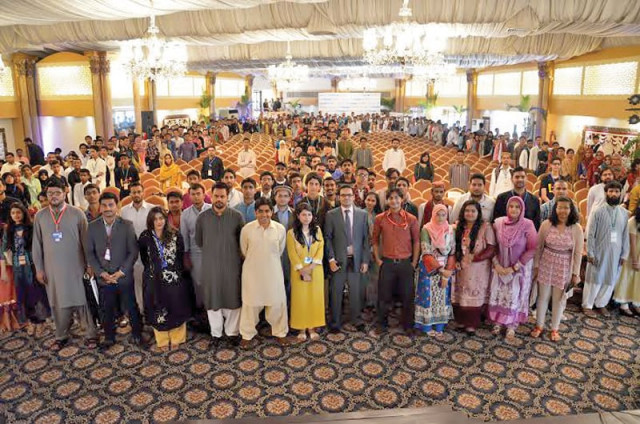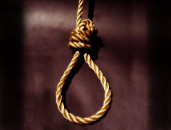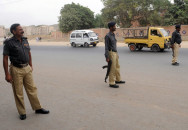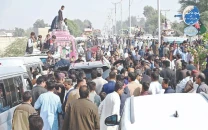I am Karachi: ‘Karachi’s strength lies in its diversity’
Over 600 youth representatives share their concerns and problems with policy-makers.

The festival is part of the 'I Am Karachi' campaign, being organised by the Sindh Culture Department. The second day of the three-day summit focused on the 'Cultural diversity and divide in Karachi'. The event provided a platform for the 600 youth representatives from different areas of the city to discuss their problems and concerns with legislators and policy-makers.

The second day of I Am Karachi festival kicked off at Arts Council, featuring various kinds of mural paintings and a diversity of Pakistani culture ranging from Sindhi and Balochi to Punjabi and Pakhtun. PHOTOS: ATHAR KHAN/EXPRESS
Speakers at the summit encouraged the youth to embrace diversity as an advantage, as this was what gave the city its unique spirit. One of the panelists, Farhat Parveen, the executive director of Now Communities, explained that Karachi's diversity was one of its biggest strengths. She added that it was up to the youth to mould it into an opportunity or disadvantage.
"Our prime objective should be towards development", said Parveen. "Our education system is getting worse by each day and it is our youth that is inevitably suffering the consequences," she added.
In response to a question on the inclusion of cultural diversity as a subject in schools, Parveen said, "Many institutions have changed their syllabus to add diversity as a course, but government schools are still far behind in this matter."

The second day of I Am Karachi festival kicked off at Arts Council, featuring various kinds of mural paintings and a diversity of Pakistani culture ranging from Sindhi and Balochi to Punjabi and Pakhtun. PHOTOS: ATHAR KHAN/EXPRESS
Amin Hashwani, the executive director of the Hashoo group, meanwhile had a different take on cultural diversity. "While it is good to be proud of your cultural identity, your humanity should trump everything else," he advised the young participants.
"The youth should stand united and stop fighting each other in the name of ethnicity and religion", he said, in response to a question from the participants. He said that Pakistan's problem was not diversity but the lack of tolerance. "Be it Pakhtuns, Sindhi, Balochi or Punjabi, everyone should be proud of who they are."

Giving examples of the likes of Mahatma Gandhi, Mother Teresa and Nelson Mandela, Hahswani said that failure was the best way to learn. The speakers also spoke about the future of Karachi's youth. "Karachi's diversity was not an issue three decades ago. It is now up to you (youth) to change these sentiments and raise your voice for a better future", said social activist, Shahnaz Wazir Ali. Criticising the education system in the country, Shahnaz said that it was chiefly responsible for the negative notions towards other religions and castes.

The second day of I Am Karachi festival kicked off at Arts Council, featuring various kinds of mural paintings and a diversity of Pakistani culture ranging from Sindhi and Balochi to Punjabi and Pakhtun. PHOTOS: ATHAR KHAN/EXPRESS
"You are the agents of change," said Shahnaz, pointing towards the participants. Citing the example of Dubai, where people from all ethnicities live together happily, she said that Karachi too drew its strength from the diversity of its inhabitants.
Towards the end of the day, the approximately 600 participants arranged themselves in the form of a human peace symbol for the group picture as the hall echoed with cries of "I am Karachi" and "Pakistan Zindabad."
Published in The Express Tribune, August 14th,2014.



















COMMENTS
Comments are moderated and generally will be posted if they are on-topic and not abusive.
For more information, please see our Comments FAQ